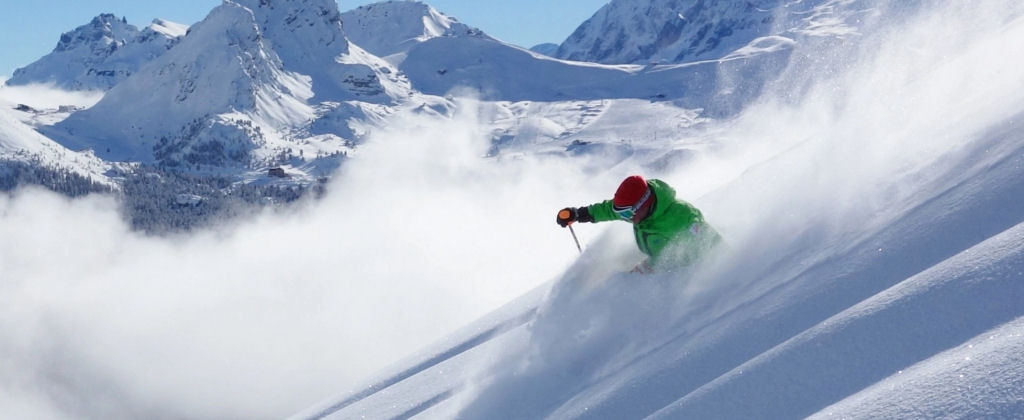For extreme skiing, paraskiing, touring skiing and similar alternative forms, you must first have the appropriate equipment, enough knowledge and experience, and last but not least, enough fitness to go down the slope.
 Extreme skiing, also known as "big mountain skiing" or "free skiing," involves skiing away from the groomed runs, down steep, forbidding slopes that offer at least 45-degree descents. You don't want to engage in any extreme skiing until you've mastered the standard version. First you’ll need to master groomed runs in resort before heading off-piste. Get comfortable with groomed reds and blacks, then try skiing on ‘natural’, ungroomed runs. The next step is getting in to some mellow off-piste terrain. Become proficient at skiing on slush, deep powder and debris.
Extreme skiing, also known as "big mountain skiing" or "free skiing," involves skiing away from the groomed runs, down steep, forbidding slopes that offer at least 45-degree descents. You don't want to engage in any extreme skiing until you've mastered the standard version. First you’ll need to master groomed runs in resort before heading off-piste. Get comfortable with groomed reds and blacks, then try skiing on ‘natural’, ungroomed runs. The next step is getting in to some mellow off-piste terrain. Become proficient at skiing on slush, deep powder and debris.
As off-piste runs are, by definition, unsecured you need to get familiar with safety protocols, not to mention the differences in technique that you’ll need to master:
- Listen to weather reports before skiing. Plan carefully and always stay abreast of weather conditions. If bad weather is forecast, cancel skiing or postpone it to the following days.
- Do not go extreme skiing if you are not physically fit.
- Pay attention to those weather conditions in which there is a high risk of triggering avalanches. There is always some risk of avalanche, and it's a leading cause of death for skiers across the board. The risk is increased when you're taking off from out-of-the-way cliffs and ledges and coming down hard and fast on improvised landing strips. Extreme skiers should always have transponders that enable rescue workers to locate them in case of avalanche, and GPS devices are a must for any extreme skier who is going off the beaten path.
- Don't forget to tell your friends, acquaintances and family where you are going and when you will be back, so they know where to look for you.
- If possible, always have a mobile phone with you. Call someone from time to time so they know where you are.
- Do not go on this type of skiing alone. One of the best safety precautions an extreme skier can take is to ski with a partner who is up to this type of skiing and can help out or call for help if something goes wrong.
- A good rule in general is that you should wear a helmet for any activity that has the word "extreme" before it. Beneath much of that fluffy powder are rocks, stumps and packed ice that can crack your head open, cause a concussion, or worse.

Related content
Are you familiar with the signs on ski slopes? You are not alone on the ski slope!
Safety on holidays

